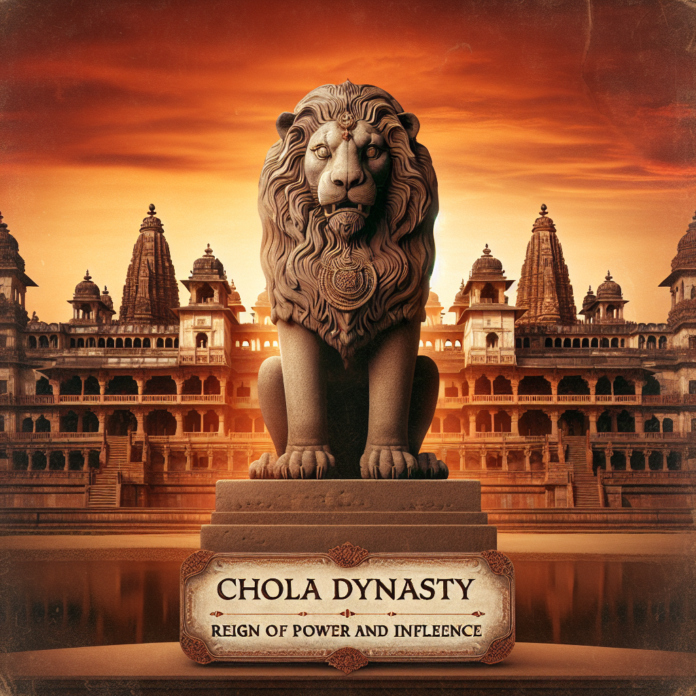The Chola Dynasty was one of India’s most powerful and influential dynasties, ruling over southern India between the 9th and 13th centuries. They played a major role in the promotion of art, architecture, trade, and religion during their reign, which is why it’s often called “the Golden Age of Tamil Culture”. The Cholas are known for their naval power, military prowess and administrative skills. These helped them expand and maintain their authority over their territory.
Vijayalaya Chola became a local chieftain during the 9th century. The Cholas slowly expanded their territories over the next few centuries through strategic alliances and military conquests. Rajaraja Chola 1 and Rajendra Chola 1 ruled the Chola empire at its peak, which included most of South India as well Sri Lanka and parts of Southeast Asia.
The Chola Dynasty was successful because of its powerful naval power. The Cholas had an impressive navy which helped them to control trade routes and commercial ties in the Indian Ocean. The Cholas established lucrative trade relations with countries such as China, Persia and Arabia which brought enormous wealth to their empire.
The Cholas, in addition to their naval and military strength, were known for their administrative abilities. The Cholas established a system for governance that was well-organized and allowed them the ability to effectively govern their vast empire. The Chola kings appointed bureaucrats who were efficient in collecting taxes, maintaining law and order and administering justice. The Cholas promoted local self government through village assemblies, called sabhas or nadu. These gave people a voice and allowed them to participate in decision-making.
Chola Dynasty patronized art and culture. They were patrons of music, literature, dance and architecture. Many temples, monuments and sculptures were constructed during their reign. The Brihadeeswarar temple in Thanjavur was built by Rajaraja Chola 1 and is a UNESCO World Heritage Site. It’s a testament to Chola architecture. The Cholas spread Tamil culture, language and literature which helped form the cultural identity of South India.
As they established diplomatic relationships with neighboring empires and kingdoms, the Chola Dynasty extended its influence far beyond India. The Cholas maintained close ties with the Chalukyas and Pallavas and sent diplomatic missions to China, Indonesia, and other neighboring kingdoms. As evidenced by numerous inscriptions, monuments, and other artifacts in Southeast Asia like Thailand, Cambodia and Indonesia, the Cholas played a major role in shaping the political and cultural landscape.
Conclusion: The Chola Dynasty is a powerful and influential family that has played a major role in the development of South India’s culture and history. Their military power, naval strength, administrative skills, patronage of culture and art, and their ability to manage a vast empire helped them create a powerful empire that has left a lasting impression on the area. The Chola Dynasty provides students with valuable insight into India’s political, social and cultural history during the Medieval period.
